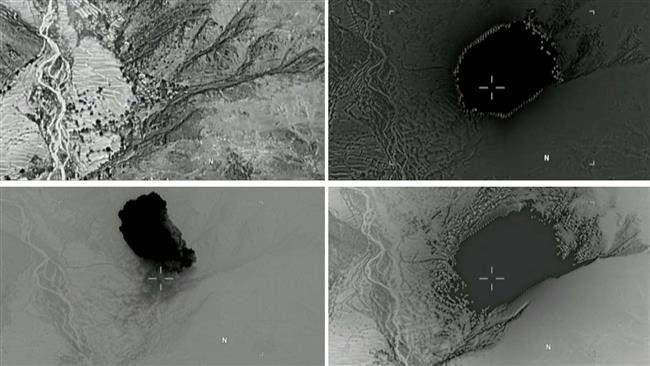
RNA - On April 13, a US aircraft dropped a GBU-43/B Massive Ordnance Air Blast (MOAB), dubbed the "Mother of All Bombs,” in Nangarhar’s Achin district.
The explosion caused by the huge bomb, which weighs more than 10,000 kilograms, is equivalent to 11 tons of TNT.
The Pentagon claimed that the bomb attack had targeted a cave complex believed to be used by militants affiliated to the Daesh terrorist group.
On Wednesday, Ahmad Jan, an Achin resident who had moved to the provincial capital Jalalabad long before the incident, told AFP that the site of the US bombing was still cordoned off.
"No one can go there, they have completely blocked the area. I don't know if my house is destroyed. They have not even shown any dead bodies to anyone," he said.
Additionally, a spokesman for Afghan special forces said landmines and "pockets of resistance" had slowed down operations in the area.
Police officials in Nangarhar and US-led forces said earlier this week that they were still assessing the situation following the bomb attack.
At least 95 militants, including some Daesh commanders and foreign members, were killed in the bombing, according to the Afghan Defense Ministry.
Afghanistan’s former President Hamid Karzai denounced the Nangarhar attack as "an immense atrocity against the Afghan people," saying his country "was used very disrespectfully by the US to test its weapons of mass destruction."
The US and its allies invaded Afghanistan in 2001, triggering a war that has killed thousands and cost tens of billions of dollars. The offensive removed Taliban from power, but the country is still grappling with insecurity.
Afghanistan has recently seen a surge in terrorist attacks despite the presence of foreign boots on the ground.
Taking advantage of the chaos, Taliban militants are regaining ground in the country while Daesh is also attempting to expand its presence there.
847/940